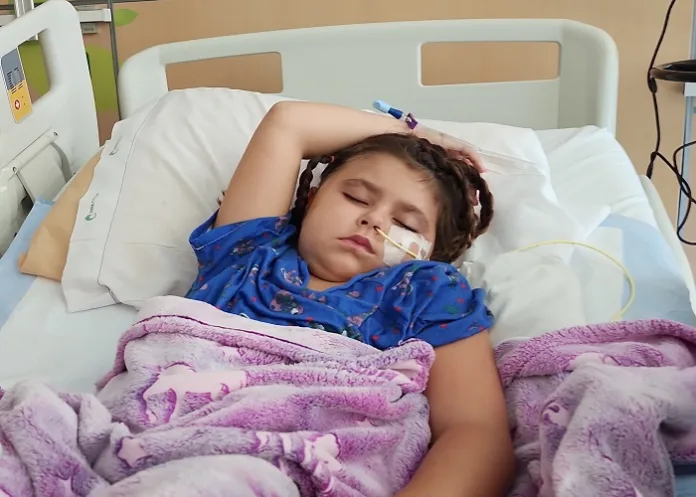A six-year-old girl with the rare neurological disease Rasmussen’s encephalitis recently underwent a 10-hour operation in California where half of her brain was disconnected in an effort to help cure her.
Brianna Bodley had what’s called a hemispherotomy, performed by Dr Aaron Robison at Loma Linda University Medical Centre.
Robison told ABC 7 that “just disconnecting it (the brain) is enough to stop the disease completely and essentially, potentially cure it”, reports USA Today.
Brianna was diagnosed with epilepsy in August 2022 after suffering from night-time seizures and spending five days in hospital.
A month later, she was again admitted to the hospital, this time for eight days, where she was diagnosed with Rasmussen’s encephalitis (RE), estimated to affect no more than 500 children globally.
RE is a chronic inflammatory neurological disease, and it usually affects just one side of the brain, according to the National Institute of Neurological Disorders and Stroke (NINDS).
It generally affects children under 10, reports The Independent, but can also occur in adults, said mother Crystal Bodley, who organised a GoFundMe page.
Apart from seizures, the disease causes inflammation of the brain, mental deterioration, the progressive loss of motor skills and speech, and eventual paralysis on one side of the body.
Although it’s rare, RE does sometimes spread from one half of the brain to the other.
Doctors tried a number of treatments to slow the progression of the disease in the child when she was first diagnosed.
She was put on six different seizure medications, and doctors tried intravenous immunoglobulin (IVIG) treatments to manage her pain. The Independent reports that she was also given multiple infusions of cancer drug Rituximab, but it didn’t produce long-lasting results.
“She was in pain due to the non-stop seizures… her leg jerks all day long even when she’s sleeping,” posted her mother.
After several seizure medications failed to work, it was recommended Brianna undergo the operation.
Hemispheroctomy
The surgery involves removing half of the brain’s cortex, or outer layer, and the procedure is used “predominantly in children who have seizures that do not respond to medication because of damage that involves only half the brain, as in Rasmussen’s encephalitis”, according to NINDS.
The surgery is among the best treatments to stop seizures for patients who qualify for the procedure, and is usually considered for children who’ve lost strength on one side of the body.
Children who are good candidates may have already lost part of their vision and dexterity in one hand. In these cases, loss of function – as a result of a hemispherectomy – is often minimal.
The surgery should be performed sooner rather than later in children who make good candidates, offering a greater chance for the child to have a life as close to normal as possible.
There are two main types of hemispherectomies – anatomic and functional. In the former, the diseased half of the the brain is physically removed. In the latter, the whole half of the diseased brain may not be removed, but it is disconnected from the healthy half.
Hemispherectomies can be life-changing for children who qualify, but complications do occasionally arise, including aseptic meningitis, infection, postoperative fevers, and the need for a blood transfusion.
A condition called hydrocephalus, caused by excess spinal fluid in the brain, can also occur immediately afterwards, or years after, a hemispherectomy. This can be treated by the placement of a shunt.
Long road ahead
After her hemispherectomy on 2 October, Brianna was moved out of the intensive care unit but remains recovering in hospital.
Despite the surgery, she will not recover her fine motor skills in her left hand, or the peripheral vision in her left eye, her GoFundMe page says.
Her care team is currently focusing on pain management and the little girl will eventually require speech therapy as well as rehab that will help her learn to use her arm and walk again.
Her family said the procedure does not change who she is. Her mother said that “Brianna will still be the same person, even after disconnecting half of her brain”.
Last week she posted that they were “pushing through these days trying to learn how to walk again and seeing things that are on her left side”.
“She only sees what's right in front of her and to the right…still a long journey to go with tons of physical therapy, speech therapy and occupational therapy.”
See more from MedicalBrief archives:
Alternative treatment for epileptic seizures in children
Abetter way to treat prolonged epileptic seizures in children

